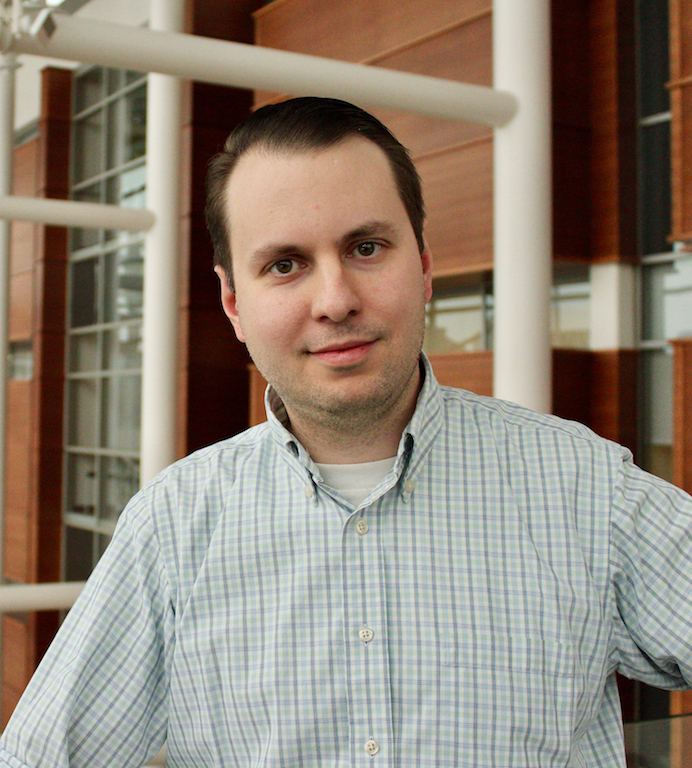| projects |
|
| Faculty Profile |
|
Department
Phone
313-577-9008
Office
Chem 77
Selected publications
- 'Defect-Induced Narrowband Light Emission from a 2D Hybrid Lead Iodide Perovskite', Adedayo M. Sanni, Sydney N. Lavan, Zhen-Fei Liu and Aaron S. Rury, The Journal of Physical Chemistry C, 2021, 125, 28004–28012
- 'Local molecular probes of ultrafast relaxation in strongly coupled metalloporphyrin-cavity systems.' Aleksandr G. Avramenko and Aaron S. Rury, The Journal of Chemical Physics, 155, 064702, (2021); invited contribution to the special issue on cavity polaritons
- 'Characterization of the Ammonium Bending Vibrations in Two-Dimensional Hybrid Lead-Halide Perovskites from Raman Spectroscopy and First-Principles Calculations.' Sydney N. Lavan, Adedayo M. Sanni, Aaron S. Rury and Zhen-Fei Liu, The Journal of Physical Chemistry C, 2021, 125, pp 223-236
- 'Kinetic Molecular Cationic Control of Defect-Induced Broadband Light Emission in 2D Hybrid Lead Iodide Perovskites.' Adedayo M. Sanni and Aaron S. Rury, The Journal of Physical Chemistry Letters, 2021, 12, pp 101-110
- Anharmonic Molecular Vibrational Probes of Dynamical Organic-Inorganic Interactions in 2D Hybrid Lead Iodide Perovskites' Adedayo M. Sanni, Sydney N. Lavan and Aaron S. Rury, The Journal of Physical Chemistry C, 2020, 124, pp 13942-13955
- 'Structural Anharmonicity Explains Continuous Frequency Shifts of Intramolecular Ring Vibrations in a Hydrogen-Bonded Antiferroelectric Crystal', Sydney N. Lavan, Cathleen A.Saraza, Kanwar Bhullar*, Sardou Sabeyo-Yonto*, Adedayo M. Sanni and Aaron S. Rury, The Journal of Physical Chemistry C, 2020, 124, pp 12933-12947
- 'Quantum Control of Ultrafast Internal Conversion using Nanoconfined Virtual Photons', Aleksandr G. Avramenko and Aaron S. Rury, The Journal of Physical Chemistry Letters, 2020, 11, pp 1013-1021
- 'Interrogating the Structure of Molecular Cavity Polaritons with Resonance Raman Scattering: An Experimentally Motivated Theoretical Description', Aleksandr G. Avramenko and Aaron S. Rury, The Journal of Physical Chemistry C, 2019, 123, pp 30551-30561
- 'Probing the Fabry-Perot Modes of Self-Assembled Excitonic Microcrystals with Subgap Light Emission', Adedayo M. Sanni, Shofikur Shohag* and Aaron S. Rury, The Journal of Physical Chemistry C, 2019, 123, pp 23103-23112
- 'Room Temperature Broadband Light Emission From Hybrid Lead Iodide Perovskite-Like Quantum Wells: THz Spectroscopic Investigation of Metastable Defects', Adedayo M. Sanni, Sydney N. Lavan, Aleksandr Avramenko, Federico Rabuffetti, Leopoldo Suescun and Aaron S. Rury, The Journal of Physical Chemistry Letters, 2019, 10, pp 1653-1662
- 'Defects Cause Subgap Luminescence from a Crystalline Tetracene Derivative', R. Eric McAnally, Jon A. Bender, Laura Estergreen, Ralf Haiges, Stephen E. Bradforth, Jahan M. Dawlaty, Sean T. Roberts and Aaron S. Rury, The Journal of Physical Chemistry Letters, 2017, 8, pp 5993–6001
Research Description
Research in the Material Structure and Dynamics Laboratory (MSDL) strives to uncover the fundamental physical processes that lead to useful properties in emerging materials. New materials with useful and exotic properties remain necessary for the development of next generation technologies in electronics, photonics, and information science. The discovery of new materials also means the development and use of tools to explore the physical mechanisms from which their properties derive. Student and postdoctoral researchers in the MSDL will use experimental, theoretical, and computational methods to tackle problems that span the fields of chemistry, physics, materials science, and optics to connect physical mechanisms to material properties.
Our approach in the MSDL is founded on understanding material structure-function relationships through the lens of vibrational spectroscopy. In particular, we design, develop, and deploy vibrational spectroscopic techniques based on pulses of laser light whose durations are less than 1 tenth of 1 trillionth of a second. Light pulses this short possess peak intensities that drive multiple photon-material interactions and give rise to the nonlinear optical properties of materials. In the MSDL, we will use these nonlinear optical interactions to produce new wavelengths of light, induce quantum coherent vibrational evolution, and watch the ultrafast dynamics of photo-excited material systems.
Our approach in the MSDL is founded on understanding material structure-function relationships through the lens of vibrational spectroscopy. In particular, we design, develop, and deploy vibrational spectroscopic techniques based on pulses of laser light whose durations are less than 1 tenth of 1 trillionth of a second. Light pulses this short possess peak intensities that drive multiple photon-material interactions and give rise to the nonlinear optical properties of materials. In the MSDL, we will use these nonlinear optical interactions to produce new wavelengths of light, induce quantum coherent vibrational evolution, and watch the ultrafast dynamics of photo-excited material systems.
